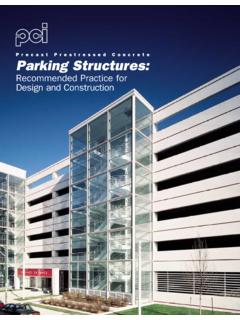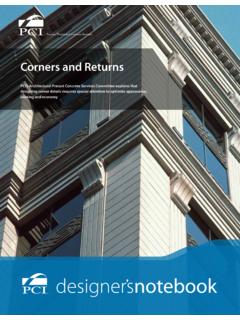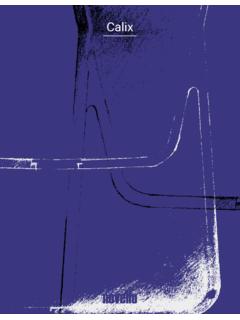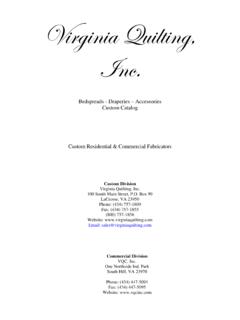Transcription of Reveals - Gate Precast Company
1 RevealsDesigners can create more exterior interest by taking advantage of the variety of possibilities with these Reveals or demarcation featuresColor logosBlack only logosReverse logos Page 2 DN-3 RevealsReveals Add Interest to Precast Panels Article IVDesigners can create more exterior interest by taking advantage of the variety of possibilities with these Reveals or demarcation featuresReveal strips can add visual interest to a building clad with architectural Precast concrete panels while eliminating some of the aesthetic concerns that develop when planning panel configura-tions. Used effectively, Reveals offer the simplest way to break up the expanse of an architectural Precast concrete panel or to keep the visual appearance from focusing on any differences that may occur in texture or coloration between reveal or demarcation feature is a groove or a step in a panel face generally used to create a desired architectural effect.
2 Another name for it is rustication or false joint. Reveals can run verti-cally, horizontally or diagonally, and there may be several bands of them on a building. Reveals typically measure 1/2 to 3/4 of an inch deep and 3/4 to 4 inches wide, with 45- to 60-degree bev-eled surfaces allowing for ease of Reduce ThicknessIt s important to remember that a reveal, regardless of its depth, reduces the structural thickness of the panel. As a result, when a deeper reveal is required than is typical, its location and effect on the panel s structural performance must be and demarcations transform simple shapes into non-routine, visually arresting forms.
3 The re-veal can be used to separate multiple finishes, mixes or textures (Fig. 4-1a). When exposed aggregate is used, a reveal or demarcation feature is required to keep the retarder from spreading to adjacent areas. A single step in thickness is sometimes used to separate surfaces and/or finishes (Fig. 4-1b).The exterior articulation helps modulate the scale of the building. Flat, windowless surfaces di-vided by Reveals or demarcation features tend to call less attention to texture and color variations. When desired, the scale of large panels may be reduced by using Reveals (Fig. 4-2).Draft RequirementsThe reveal should be wider than it is deep so the panel can be stripped without damaging the mold (Fig.)
4 4-3). Generally, the minimum positive draft for ease of stripping a panel from a mold is one inch in one foot (1:12), with one in eight (1:8) preferred. The draft should be increased to 1:6 for repeated patterns, delicate units and narrow sections (such as Reveals ) where suction between the panel and the mold becomes a major factor in separation. For example: 1:6, 1/2:3, 1/4:1-1/2, 1/8:3 Reveals Page 3 Reveals can be single (Fig. 4-3), double (Fig. 4-4), layered (Fig. 4-5) or repeated (Fig. 4-3). They also can run in patterns (Fig. 4-6) or feature various shapes (Fig. 4-7). Deep-set Reveals are incorporated in fa ades to give visual relief and may require thickened sections (Fig.
5 4-8).Typically, the mold cost associated with Reveals is insignificant in comparison to bullnoses and cornices. However, deep-set Reveals requiring thickened sections may add some mold costs, along with significant back-forming costs (Fig. 4-9).Using Reveals to Design Architectural Precast PanelsArchitect W. Kenneth Wiseman explains why Reveals represent the most fundamental detail for producing aesthetically pleasing designsWhen you search the Internet for the meaning of reveal, the first citation in Webster s elec-tronic dictionary defines it as a verb that means to open up to view, to display, to divulge or to make known what has been or should be concealed.
6 It takes additional searching to find reveal as a noun in today s Webster dictionary. But if you go to the 1913 version of the Web-ster s unabridged dictionary, the first citation defines reveal as a noun, meaning, the side of an opening for a window, doorway, or the like, between the door frame or window frame and the outer surface of the wall; or, where the opening is not filled with a door, etc., the whole thickness of the wall: the jamb. Ironically, the use of Reveals in Precast design in the late 20th century has much more to do with its use as a verb than it does with 1913 s foremost definition of reveal as a noun, despite its architectural context in that we all learned in grade school, a verb is an action word.
7 That s exactly what architectural re-veals provide to a Precast panel: the visual action. Reveals do much more than simply articulate the thickness of the Precast . Designing Reveals with architectural Precast components creates the most fundamental detail for producing a beautiful Precast UsesPrecast by its very nature is made up of panels or component pieces that are assembled to create the building s structure or skin. Those pieces obviously have joints between them, and Reveals most pragmatic uses come in articulating those fundamental joints. These joints can be either emphasized or minimized and hidden by the creative addition of Reveals .
8 Reveals other pragmatic uses come in providing drips and/or small horizontal shelves to protect openings and control moisture as it moves along the exterior surface of the Precast . Page 4 DN-3 RevealsFigures 4-1a & 4-1b Sandblast FinishFigure 4-2 Scale ReducingFigure 4-3 Single & RepeatedFigure 4-5 LayeredFigure 4-6 PatternFigure 4-7 Various ShapesFigure 4-8 Deep SetFigure 4-9 MoldsFigure 4-4 DoubleDN-3 Reveals Page 5 Beyond the pragmatic applications of this most-important detail are the more practical uses. Re-veals typically are designed where there are changes in the Precast s surface. For example a shift in the panel s finish from smooth to textured can be emphasized by using a reveal at the point where the surface texture changes.
9 Reveals also work well where fundamental materials change within a Precast panel, such as from an exposed-aggregate finish to a non exposed-aggregate finish within the panel. Reveals allow a crisp, clean transition between these different textures or , Reveals can be placed where there are directional changes in the Precast surface, such as between a vertical surface and a cornice or bullnose detail. These elements within a wall design can be emphasized or de-emphasized through the use of Reveals . (For further discussion of bull-noses and cornices see the previous two sections of the Designer s Notebook.)Aesthetic UsesHowever, Reveals can be much more than a joint or line of demarcation between textures or fin-ishes.
10 Designing Reveals in varying shapes, sizes and depths for a Precast wall can transform what initially might be considered a mundane, solid surface into a rich texture of shade and shadow, bringing visual interest to the building s fa ade. At Lehman/Smith/Wiseman Associates LLC, we strive to push the range of possible Precast details to achieve their greatest aesthetic can take horizontal, vertical, diagonal, or curved forms, as well as any combination of these. They can be narrow and delicate or deep, wide and bold; they can offer a rectangular profile or take on any sectional shape desired, such as concave or horizontal Reveals within a Precast wall emphasizes floor lines, ceiling lines, or roof lines.








